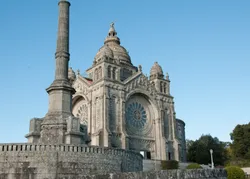

Portugal Viana do Castelo History and Features Overview
Discover the rich history and unique features of Viana do Castelo, Portugal. Explore its stunning landscapes, culture, and heritage, revealing what makes this region special.
Viana do Castelo: A Gem of Northern Portugal
Mycarro AI
May 2, 2025
Introduction to Viana do Castelo
Nestled between the lush hills of the Minho region and the Atlantic Ocean, Viana do Castelo is a picturesque municipality and city located in northern Portugal. Known for its rich history, stunning natural landscapes, and vibrant cultural scene, Viana do Castelo attracts visitors from around the globe who are eager to explore its unique blend of tradition and modernity. With its strategic location at the mouth of the Lima River, the city has long been an important maritime hub, shaping its cultural and economic development over the centuries.
Historical Significance
The history of Viana do Castelo dates back to the Roman Empire, with archaeology revealing remnants of Roman settlements throughout the region. However, it wasn’t until the Middle Ages that the city began to flourish significantly. The establishment of a harbor allowed Viana to become an essential center for trade and fishing. The city's medieval architecture can still be admired in its well-preserved old town, where cobblestone streets wind past charming facades and historical landmarks, such as the impressive Estalagem do Paço and the Igreja de Nossa Senhora da Agonia.
Architectural Marvels
One of the city’s most iconic structures is the Sanctuary of Santa Luzia, perched atop a hill overlooking Viana do Castelo. This magnificent basilica, completed in the early 20th century, combines Romanesque and Byzantine architectural styles and features stunning mosaics and stained glass. The panoramic views from the summit of Santa Luzia Hill offer breathtaking vistas of the surrounding countryside and the Atlantic Ocean, making it a popular spot for both tourists and locals alike.
In addition to the basilica, the city is home to several impressive palaces and mansions that reflect Viana do Castelo's rich maritime heritage. The historic buildings along Praça da República tell stories of ship captains and wealthy merchants, while the classic Manueline architecture of the Church of Santa Maria Maior serves as a testament to the artistic skill of the Renaissance period.
Natural Wonders
Viana do Castelo's natural beauty is perhaps one of its most captivating features. The city boasts a stunning coastline, with golden sandy beaches like Praia do Cabedelo and Praia da Amorosa attracting sun-seekers and water sports enthusiasts. The nearby Peneda-Gerês National Park offers hiking trails, lush greenery, and cascading waterfalls, enticing those who appreciate the great outdoors. The river Lima, with its crystal-clear waters, provides opportunities for kayaking and fishing, encouraging visitors to immerse themselves in the region's natural splendor.
Festivals and Cultural Life
Cultural traditions are vibrant in Viana do Castelo, with numerous festivals held throughout the year that showcase the region's folklore and customs. One of the most significant festivities is the Festa de Nossa Senhora da Agonia, held annually in August, which attracts thousands of locals and visitors. The event features colorful parades, traditional costumes, and live music, creating an electric atmosphere that reflects the community's pride and devotion.
Art and music also play a vital role in the cultural landscape of the city, with various theaters, galleries, and music venues hosting performances and exhibitions year-round. Viana do Castelo is particularly known for its local artisans, who create intricate handicrafts, textiles, and traditional pottery, allowing visitors to take home a piece of the region's artistic legacy.
Conclusion
Viana do Castelo offers an enriching experience filled with history, culture, and stunning landscapes. Its charming streets, architectural marvels, and the welcoming nature of its residents make it a perfect destination for those seeking to escape the hustle and bustle of modern life. Whether you're wandering through its historic center, basking on its beautiful beaches, or savoring local delicacies, Viana do Castelo stands out as a captivating gem in northern Portugal that should not be missed.